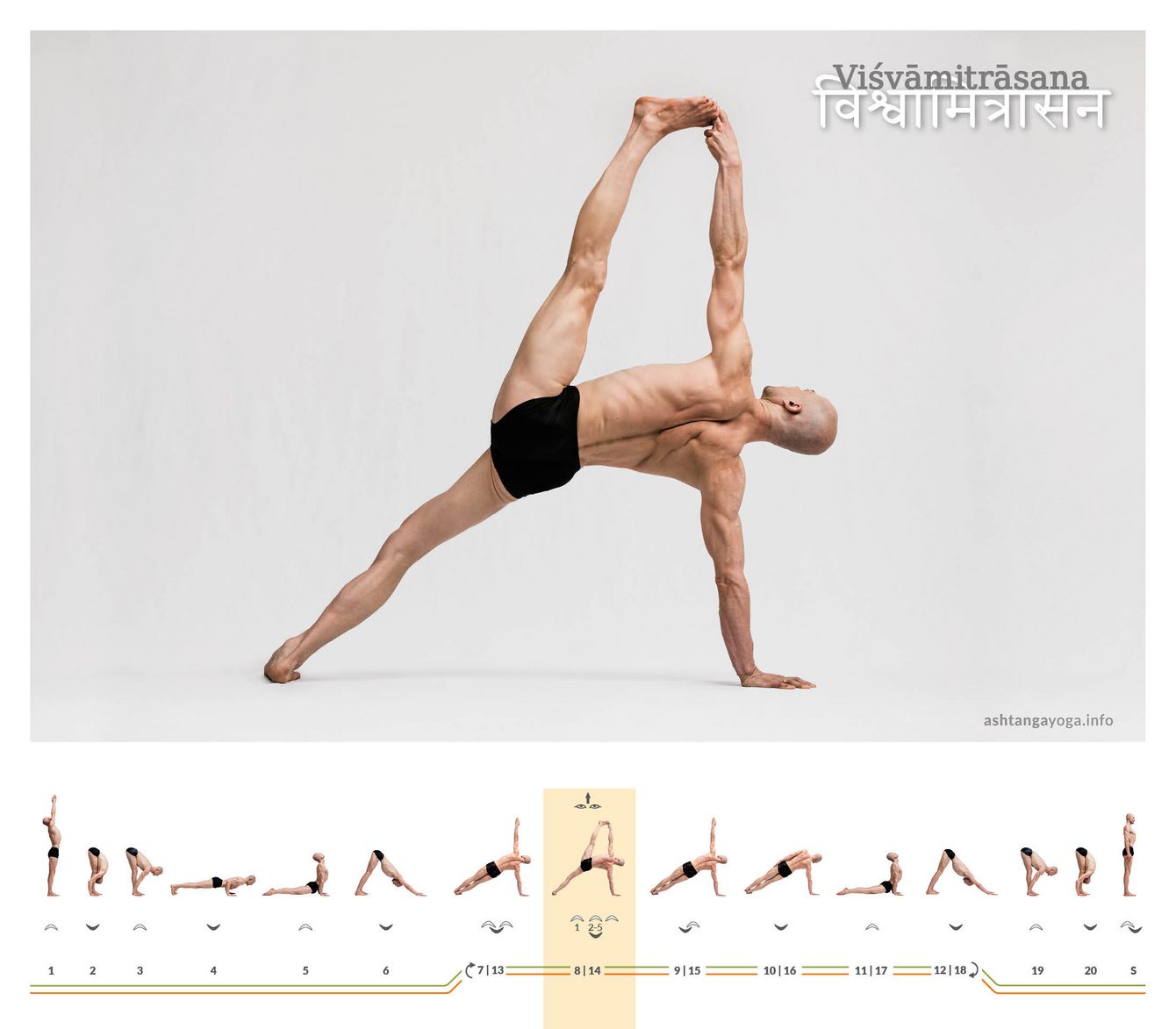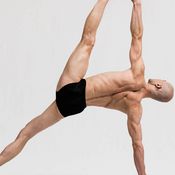

Legend: According to mythology, Vasiṣṭha was born from the mind (manas) of the creator god Brahma. He is counted among the seven sages (sapta r̥ṣi) symbolized in the constellation of the Big Dipper.
The origin of the Vedas lies in Bahma. He gave the hymns to the seven sages and entrusted them with preserving their knowledge and passing it on to future generations. Many verses in the Rg Veda praise Vasiṣṭha as one of the authors.
Vasiṣṭha symbolizes the ability to perceive the subtle truth behind the physical world. Therefore, in addition to the Vedic texts, many other philosophical teachings from various traditions are attributed to him.
Special Note: In older Aṣṭāṅga Yoga books, the names of the poses Vasiṣṭhāsana and the subsequent pose Viśvāmitrāsana are often reversed. In "Light on Yoga" by BKS Iyengar, most Aṣṭāṅga Yoga books, and in most other yoga lineages, the names are chosen as presented here.
Directly from the pose of "Downward-Facing Dog" in the previous sequence of movements:
Vinyāsa 7 - Inhalation, Exhalation, Inhalation, Exhalation:
Inhale and slide your shoulders over your hands. Move your right hand to the center of your yoga mat while exhaling. Shift your weight onto your right hand and twist sideways, with your left arm initially lying flat against the left side of your body. Inhale again, lifting your left arm upward. Exhale here.
Vinyāsa 8 - Inhalation, 5 breaths, Inhalation:
With your next inhalation, lift your left leg upward. Grab your big toe with two fingers. Follow the gaze of your left hand upward. Stay here until the fifth exhalation. Inhale once more.
Vinyāsa 9 – Exhalation, Inhalation:
Release the grip of your left hand and lower your left leg back to the side. However, keep your left arm up for one more inhalation.
Vinyāsa 10 - Exhalation:
Exhale and lower your left arm down to your side. At the end of this exhalation, rotate and lower yourself into Caturaṅga Daṇḍāsana.
Vinyāsa 11 to 12:
Follow the familiar sequence of movements until you return to "Downward-Facing Dog."
Vinyāsa 13 to 18:
Repeat the sequence of movements on the other side until you return to "Downward-Facing Dog" again.
In traditional counting: Proceed directly to the sequence of movements for the next pose from here.
Effect: This pose builds stability in the core and enhances neuromuscular interaction around the shoulder joint, improving overall upper body balance. It also has emotional benefits, calming the mind, enhancing concentration, and boosting self-confidence, resulting in physical and emotional harmony.
Fotograf: Richard Pilnick - www.richardpilnick.com
-

Ursula Tanner
at 19.03.2023Hallo Ronald, ziehst du die Schulterblätter vom oberen Arm nach unten? Hallo Ronald, ziehst du die Schulterblätter vom oberen Arm nach unten?
-
Nein ich schiebe es lang. .. Schaut hier wirklich so aus als würde ich es zurück ziehen. Aber es sollte langgeschoben sein. :) Nein ich schiebe es lang. .. Schaut hier wirklich so aus als würde ich es zurück ziehen. Aber es sollte langgeschoben sein. :)
-


 Dr. Ronald Steiner
Dr. Ronald Steiner

Messages and ratings